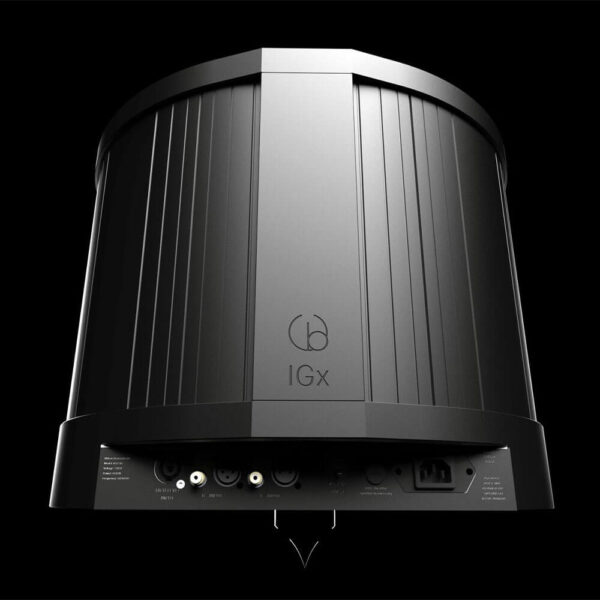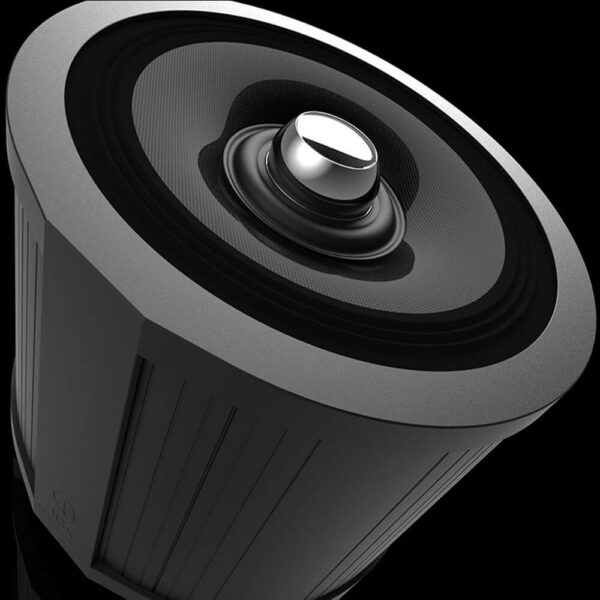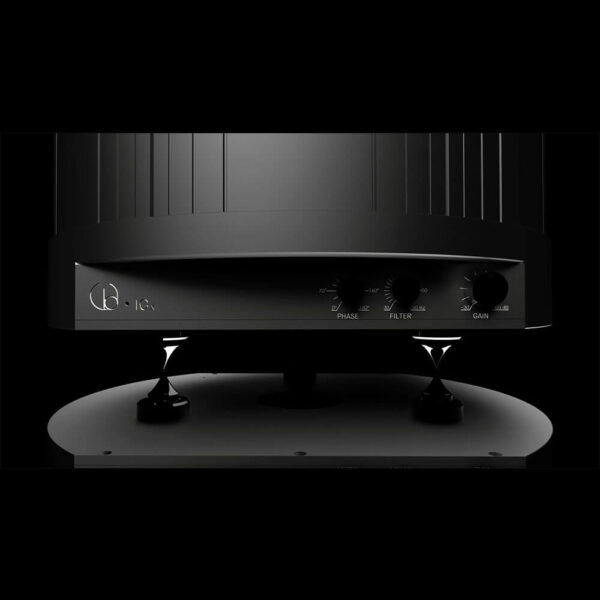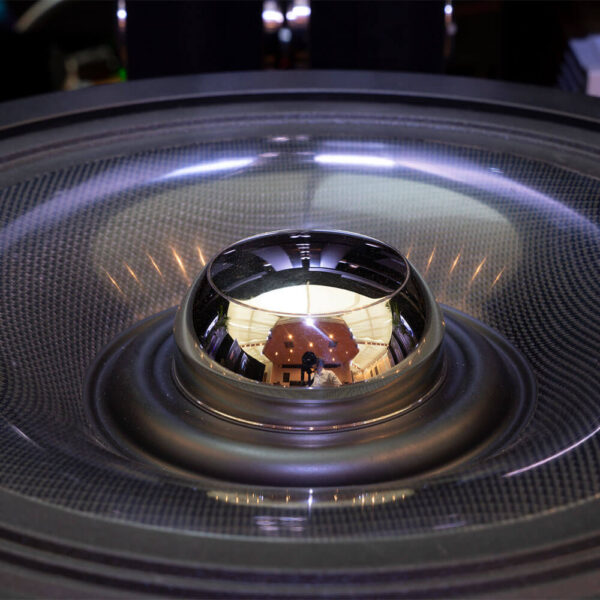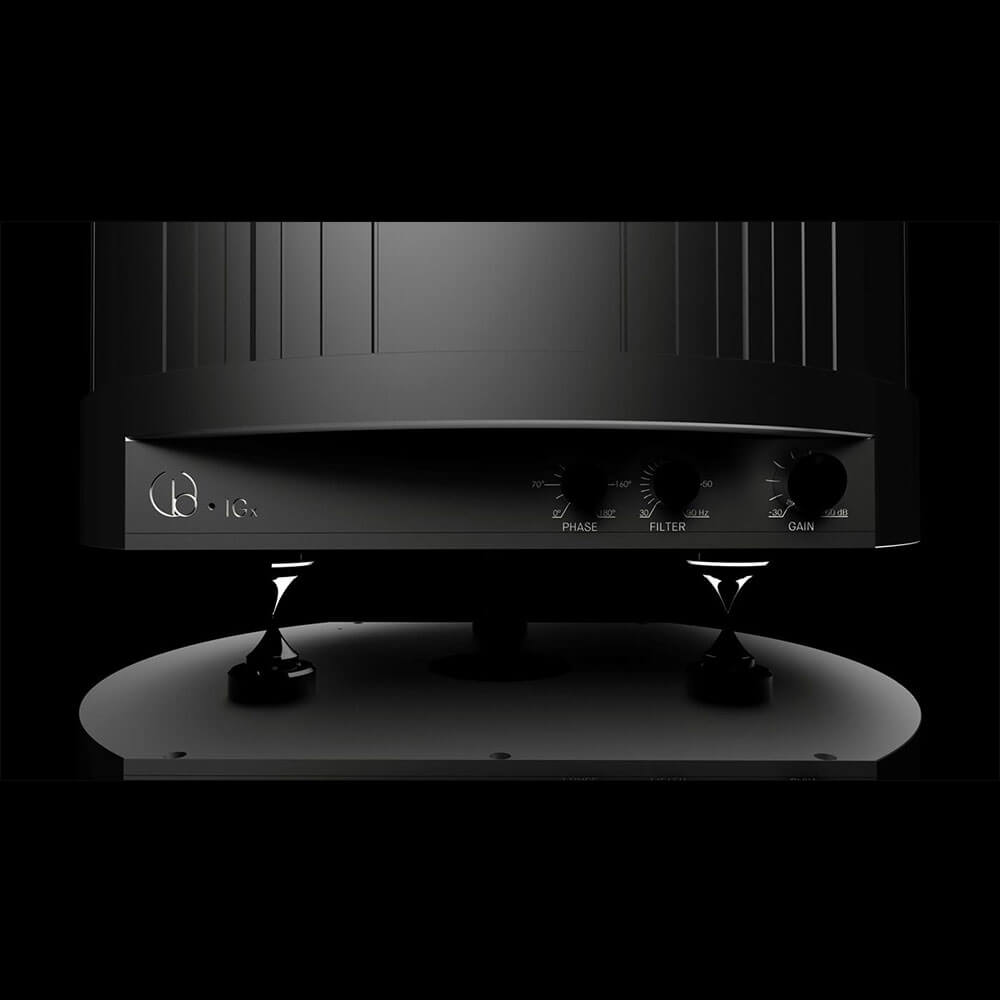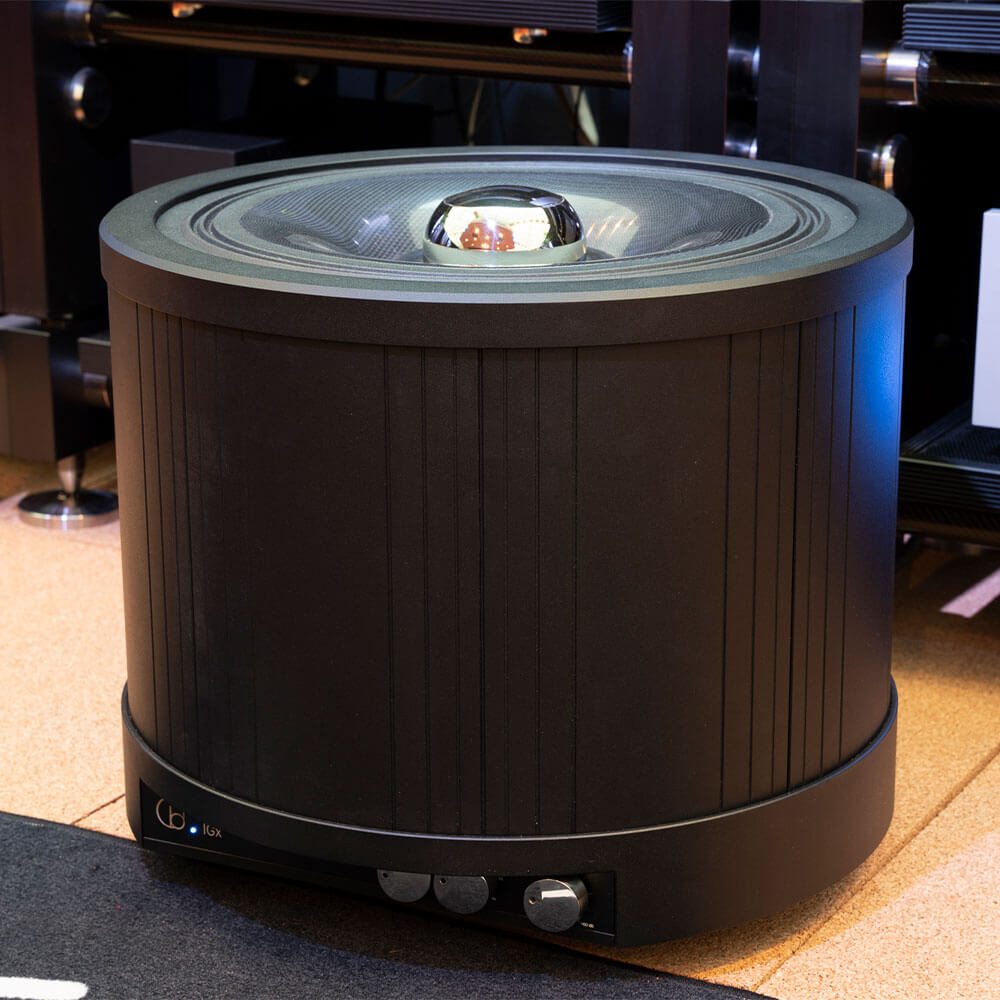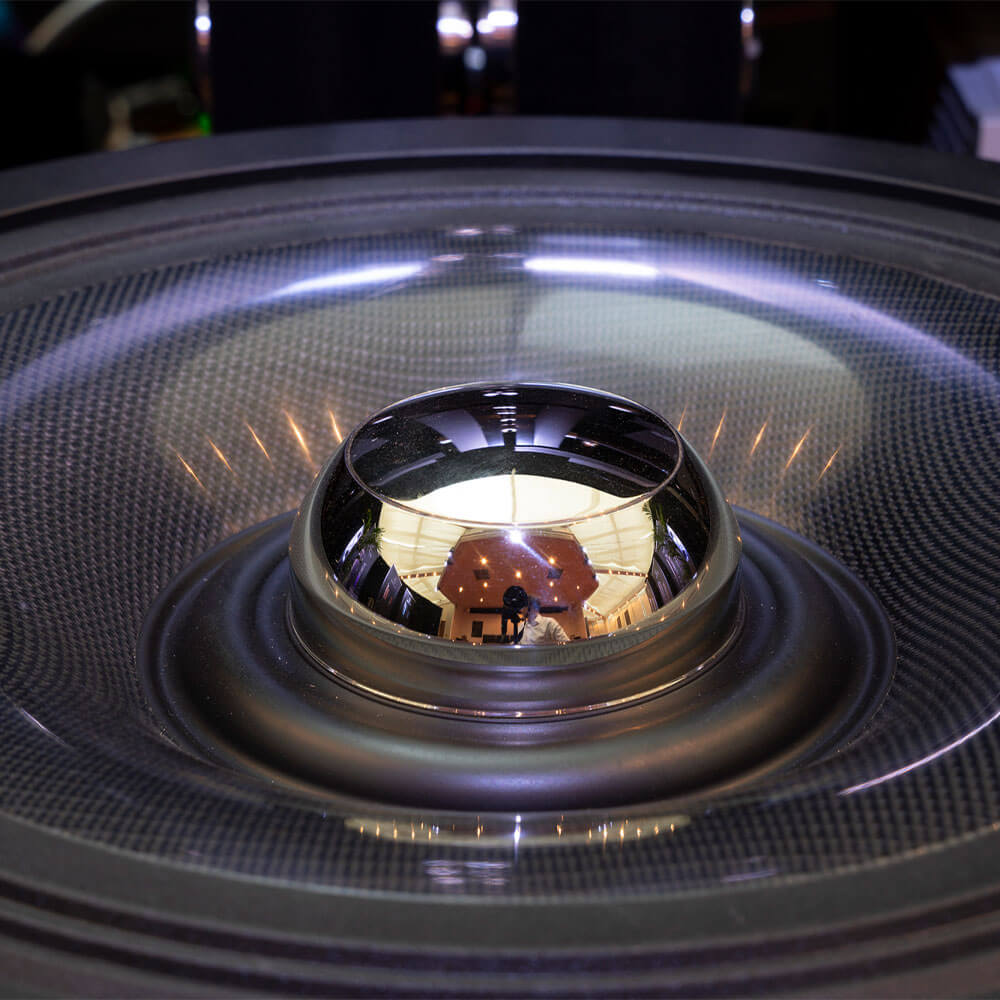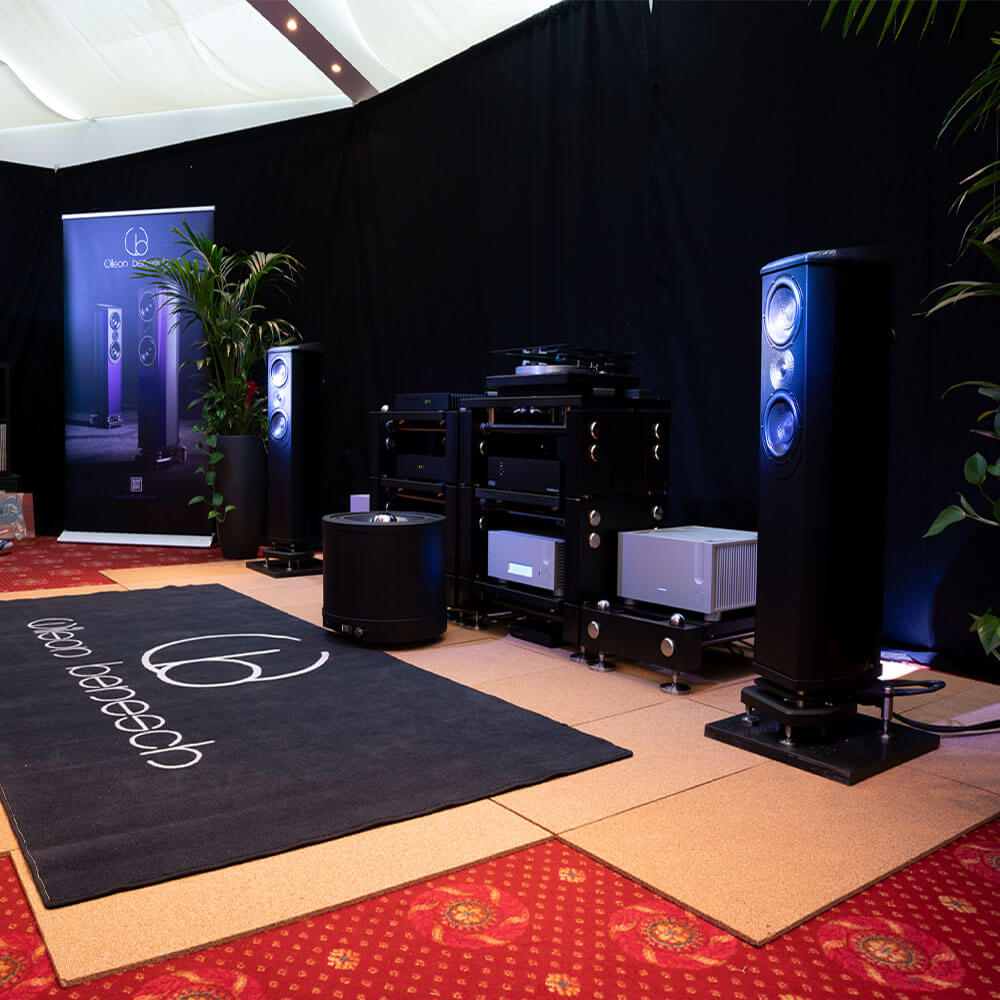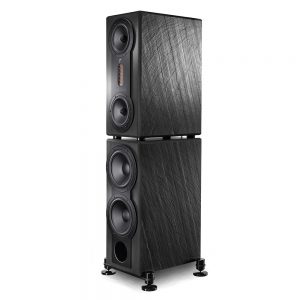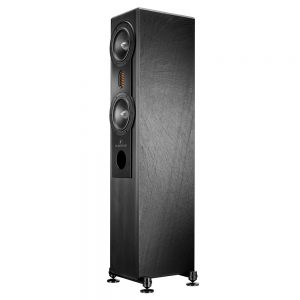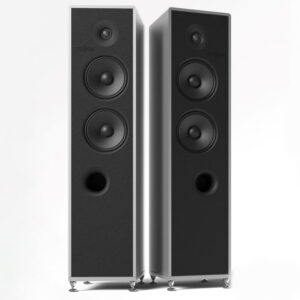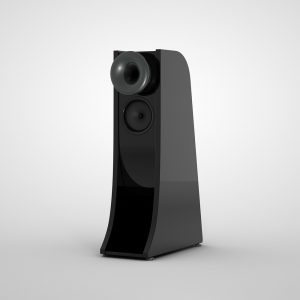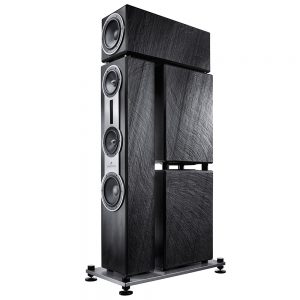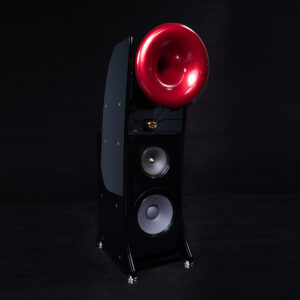
Wilson Benesch IGx
Infrasonic Generator
- Description
Description
There are many benefits to extending the performance of your system in the lower frequency domain (bass). Sometimes you are simply extending or augmenting your bass performance due to the limitations of your speakers. Sometimes you need to cater for your room’s specific needs. Other times, you may recognise that even your full range speakers that are capable of producing deep bass are not producing quality deep bass or the system simply needs more energy in the low frequencies to properly support the higher frequencies and communicate the emotional message of the music.
There are many benefits to addressing the lower frequency performance of your system. Aside from the obvious presentation of bass notes, optimising the bass performance of a well-set up hi-fi system has a huge impact on soundstage depth behind the speakers (enhancing ‘believability’), the system warmth, the communication of spatial information and the energy/drive of a note or passage of music which enhances its emotional impact.
In our experience, there’s one characteristic that is very rare in high-end systems – low frequency accuracy. We have observed that the typical full-range system (systems that can deliver 20Hz – 20,000Hz) presents the deeper bass with energy, so you can hear it and measure it, but it lacks articulation, tone and speed. We have experienced many systems where the deeper bass was a thud-thud sound like you would experience at a night club but the bass tonality did not change as the higher frequency notes changed and there was lots of bass overhang where the previous bass note is still present when the new note has started, smearing the lower frequency information and robbing the system of the little bit of silence between the bass notes that is required to articulate the flow of the music. Furthermore, the bass is the foundation of each musical note. The bass should express the subtle differences in the tonality of each note, which is impossible with the thud-thud style of bass presentation which does not have the speed and control to express these subtle nuances. As a result, a lot of audiophiles focus on the midrange and higher frequencies, thinking that it there’s an audible thud when a bass note or kick drum occurs, then the system is doing its job.
Wilson Benesch addressed this issue by utilising smaller tactic drivers in an isobaric clam-shell configuration for its reference Fibonacci speaker range rather than going with big bass drivers like many other brands do. This strategy moves even more air than the big bass drivers but by using many smaller drivers, the bass is more accurate and faster, avoiding the slow, distorted bass response of big drivers. This way of dealing with bass is one of the unique defining features of Wilson Benesch speakers and has earned them a reputation for lightning fast, tuneful bass. If you want proof of this, play the fastest, most complex electronica music through a set of Fibonacci speakers and be prepared for a revelation.
If you wish to optimise your low frequency extension and performance by adding another device, you are faced with a raft of sub-woofer options at all budgets. Sometimes it is very difficult to properly integrate a sub-woofer into a quality hi-fi system because there is an audible difference between what your speaker is doing and what your sub-woofer system is doing. This challenge exists because often there is a different sonic characteristic between the bass driver of your speaker and the bass driver of your subwoofer.
If you can hear the presence of the sub-woofer, it destroys the coherence of the sound and draws the attention of our mind to it – some people’s ears are very sensitive to that phenomenon. Sometimes you can achieve a reasonable integration and other times you may need to change the parameters of the crossover network to cross in a powerful, physically large sub-woofer system earlier (say 50Hz). Furthermore, the better the speaker system, the faster and more accurate the bass response and therefore the harder it is to integrate a slow sub-woofer.
Which brings us to the IGx, a purpose-built low frequency generator with a speed, control and accuracy that has never been experienced before. A few years ago, after extensive research and development, Wilson Benesch released the Torus Infrasonic Generator into the market and this redefined what a low frequency (infrasonic) generator could do. The new IGx pays homage to the Torus but is a whole new level of performance beyond it and is without a doubt the world standard for low frequency augmentation. Made by the same people who perfected the isobaric bass system in their speakers, this phenomenal product is the result of decades of research, development, refinement, innovation and evolution. It will not only give you the ability to achieve bass extension of the highest order, it’s the QUALITY of the bass and the INTEGRATION that is so impressive.
Due to its speed, the IGx is the perfect partner for the Wilson Benesch range of speakers but in actuality, it is a great match with any speaker, something that can’t be said about many subwoofer systems. You do not have to be a Wilson Benesch owner to enjoy the excellent system transformation that an IGx can deliver. Finally, a solution that is powerful, tuneful, fast but sonically invisible! Investing in an IGx system will bring out the best bass performance of your system. When you hear what it can do, you will not be able to ‘un-hear’ it…
Reviews
Product Specifications
| Type | Infrasonic Generator (Often referred to as a sub-woofer however much more advanced and capable than typical subwoofers) |
|---|---|
| Drive Technology | 18” Carbon Fibre – Polyethylene Terephthalate (PET) Diaphragm Push-Pull Motor Around Steel Core |
| Interface Gain | -30dB to +60dB |
| Output Power | 100W continuous 500W maximum into 4ohm |
| Frequency Response | 5Hz to 90Hz Max (-3dB) 5Hz to 30Hz Min (-3dB) |
| Input Impedance | 10k ohms (RCA) 10k ohms per phase (XLR) 180k ohms (Speakon) |
| Distortion | < 0.03% @1W |
| Phase Shift | Balanced passive all-pass filter (0deg to 180deg variable) |
| Phase Shift Bypass | Panel mounted toggle switch (Direct or Variable phase) |
| Analogue Inputs | 1 x Left RCA 1 x Left XLR 1 x Right RCA 1 x Right XLR 1 x Left & Right High level Speakon |
| Input Sensitivity | 100mV (Low level unbalanced RCA) 50mV per phase (Low level balanced XLR) 1V (High level Speakon) |
| Power Consumption | 10W-15W (idle) 650W maximum |
| Input Voltage Fuse Rating | 230Vac (50/60Hz) |
| Fuse Rating | T2A 250V |
| Dimensions | Height 432mm inc. spikes. Diameter 510mm Weight 54kg / Magnetic Grill 3kg |


